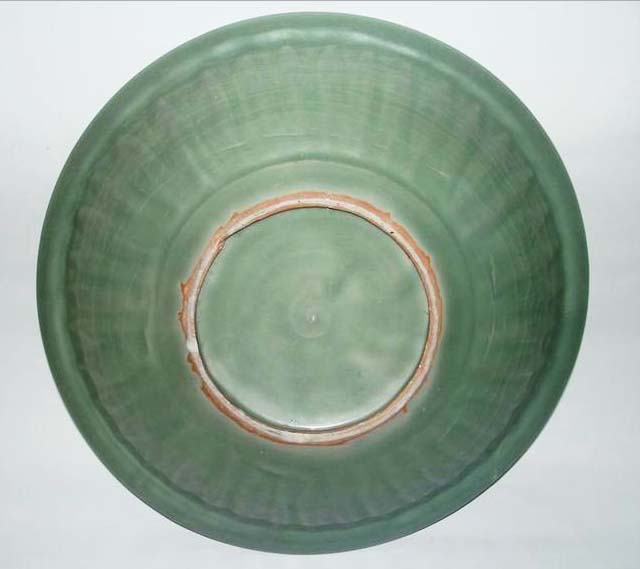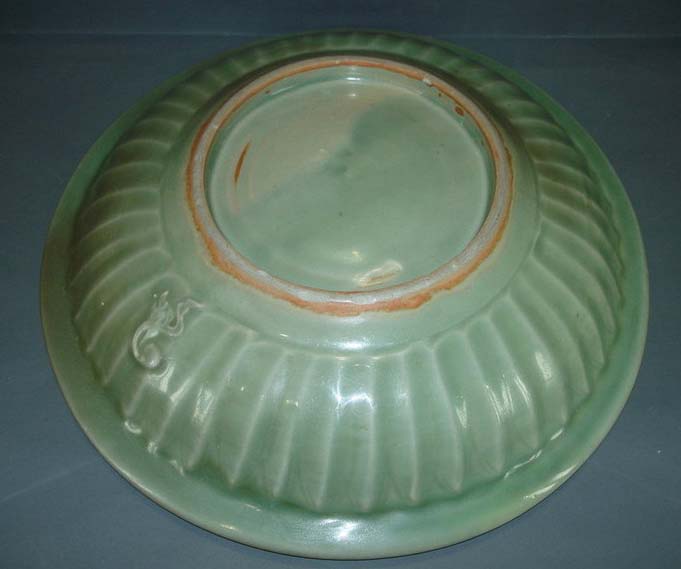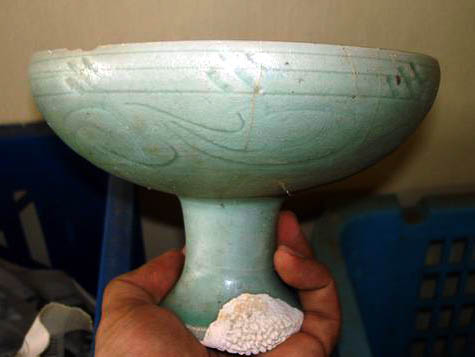Yuan (14th century onward) Longquan wares
During this phase, there was further development in terms of the production technology. The
potters were capable of making large vases, jars and plates to meet the
needs of largely overseas consumers from Southeast Asia and West Asia. Such
large vessels demonstrated the technical competence of the Longquan
potters. They were not easy to produce as warping is a constant challenge
that needed to be resolved
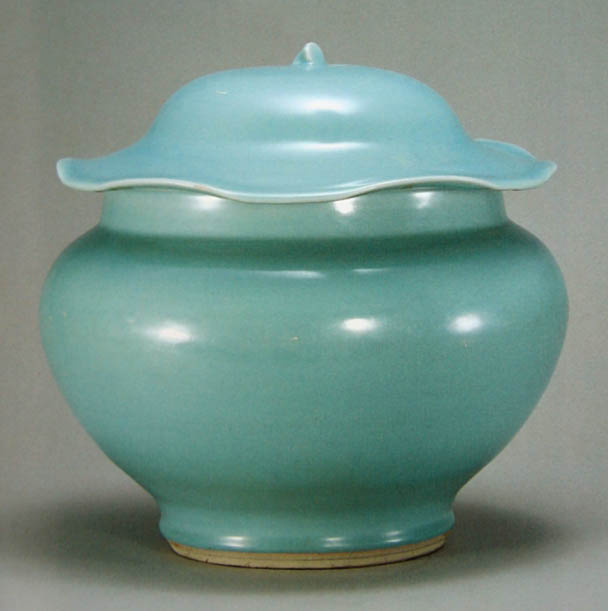 |
| This
Southern Song Jar is from a hoard in Sichuan. Such big jars were
produced in substantial number during the Yuan period, with many
decorated with impressed/carved floral motif. There were
also those with ribbed body. Similar jars to above were
found in the Sinan wreck dated A.D 1323 |
 |
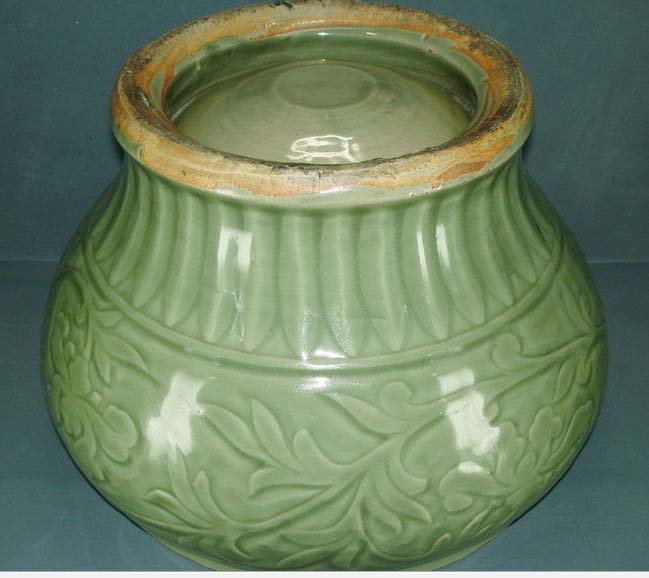 |
|
A big
jar with floral motif. Most probably dated to late Yuan period
|
|
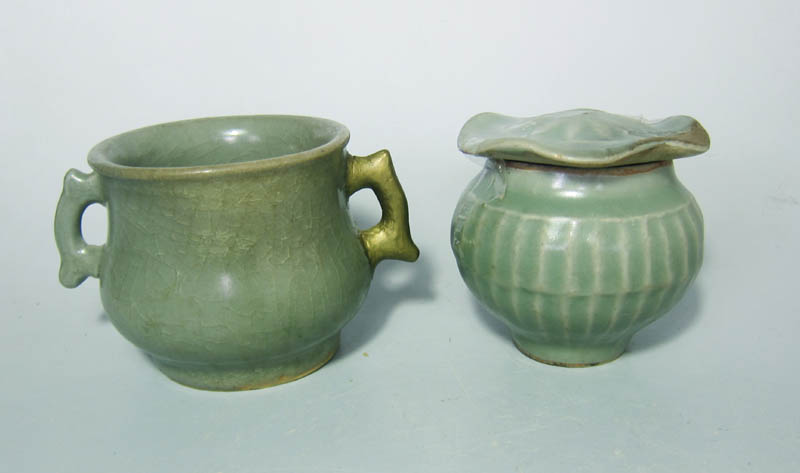
|
| Yuan
incenser burner and jarlet. The jarlet with ribbed body was
produced in large number for overseas market during the Yuan period |
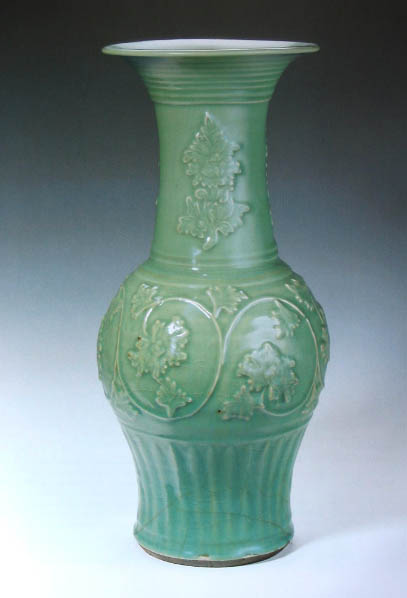
Similar
big vases were found in the Sinan wreck dated to A.D 1323
A new type of bowls with incised
parallel lines near the rim was introduced. There were also version
with the parallel lines further intersected at interval by slanting lines.
The lower outer wall is decorated with lightly incised petals.
The footring is thicker and has unglaze outer base. In this aspect, it is
similar to those introduced during the Northern Song period. The inner
wall of the bowl is decorated with carved lotus
flower. There were also other decorative variety such as those with
elaboate impressed floral motif on inner
wall or floral spray on the inner base.
Please refer to below examples. This type of bowl with expanded belly
which has a more gradual curve and a flaring mouth rim became the dominant type. It
remains a popular bowl form even till present day.
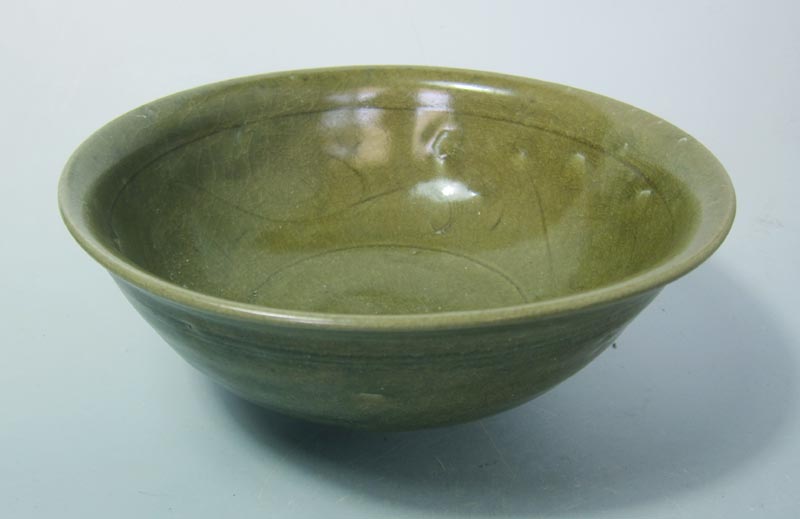 |
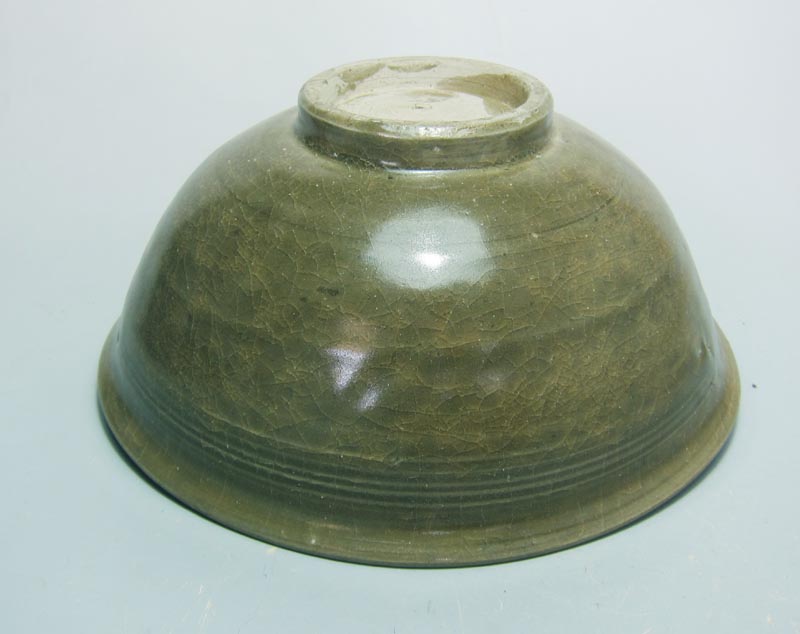 |
|
Example
with parallel lines near the rim and lightly carved motif on the inner
wall |
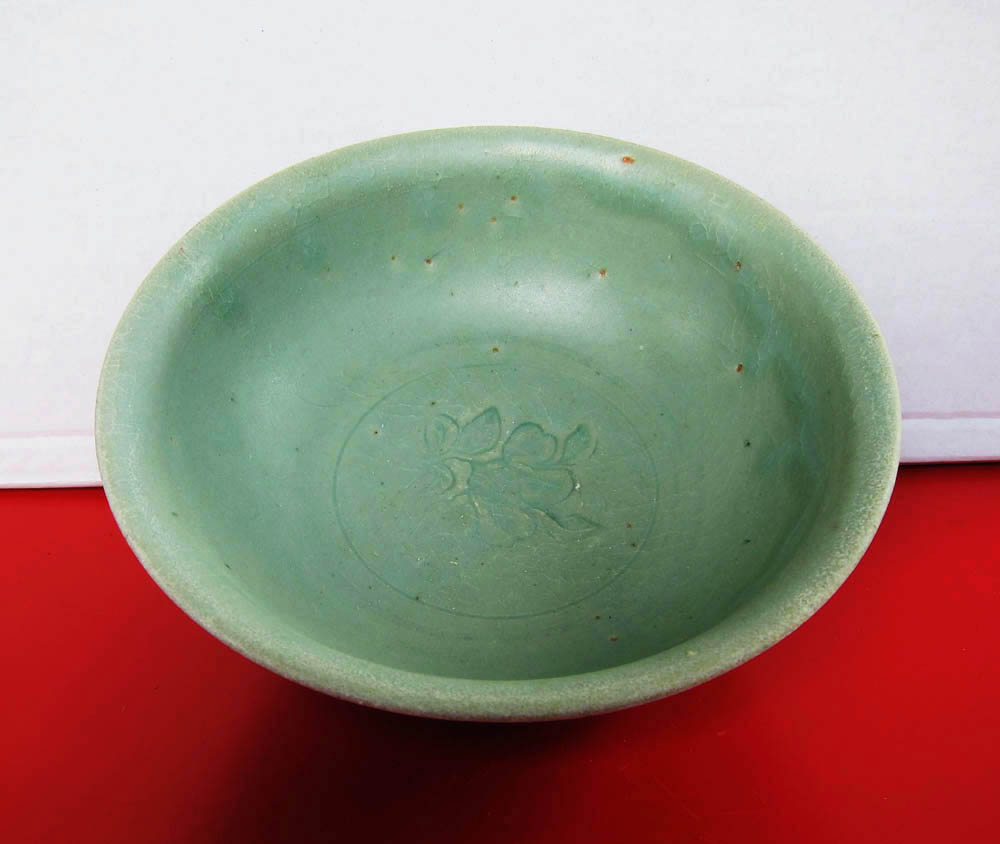 |
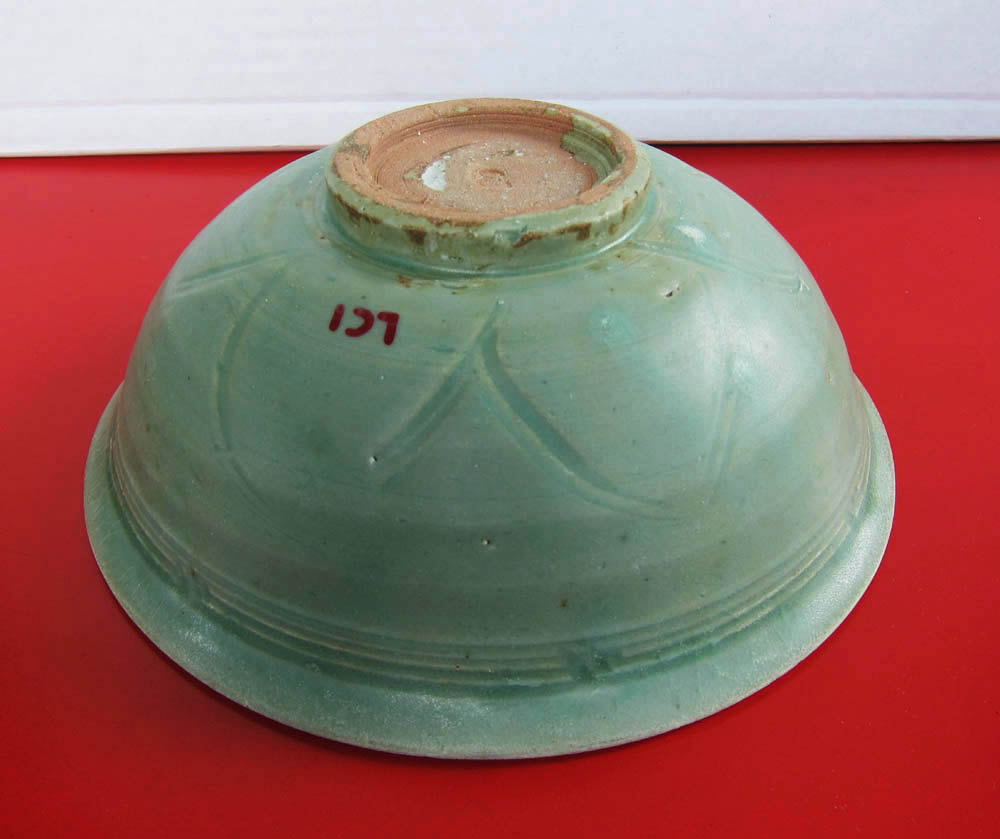 |
|
Examples
with parallel lines intersected by slanting lines |
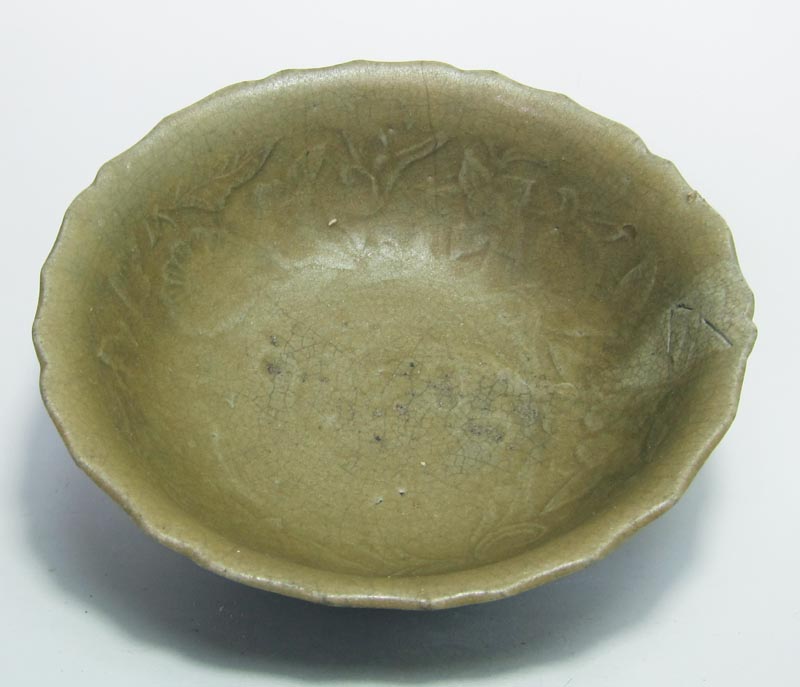 |
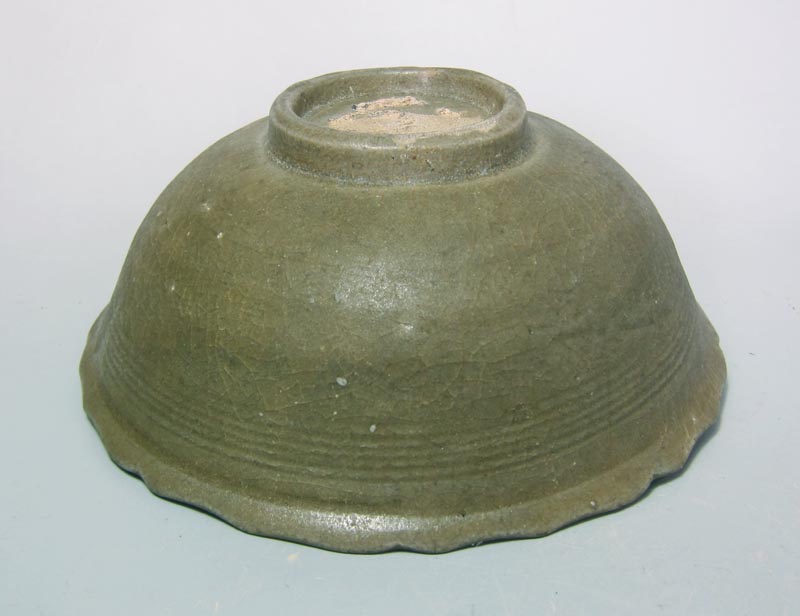 |
|
Example
with impress floral motif on the inner wall |
Those bowls and dishes with the slender
lotus petals on the external wall continued to be produced. The foot
became thicker. A new category with carved floral/vegetal motif on the internal
wall was introduced. Bigger size bowls and
plates were also added to the product range. Stem cups also made appearance
around this period.
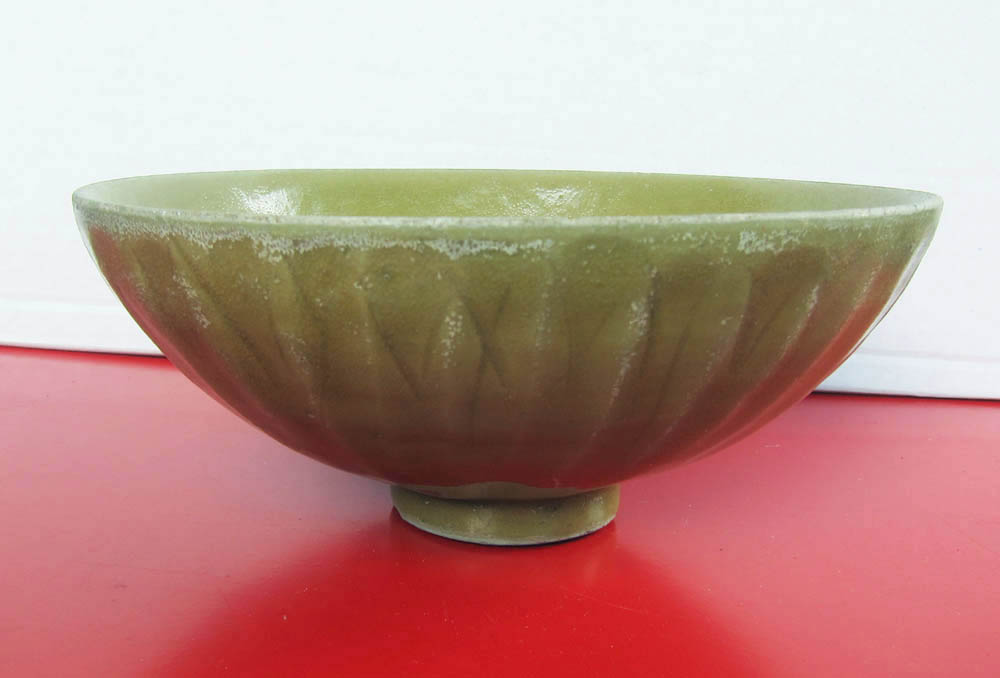 |
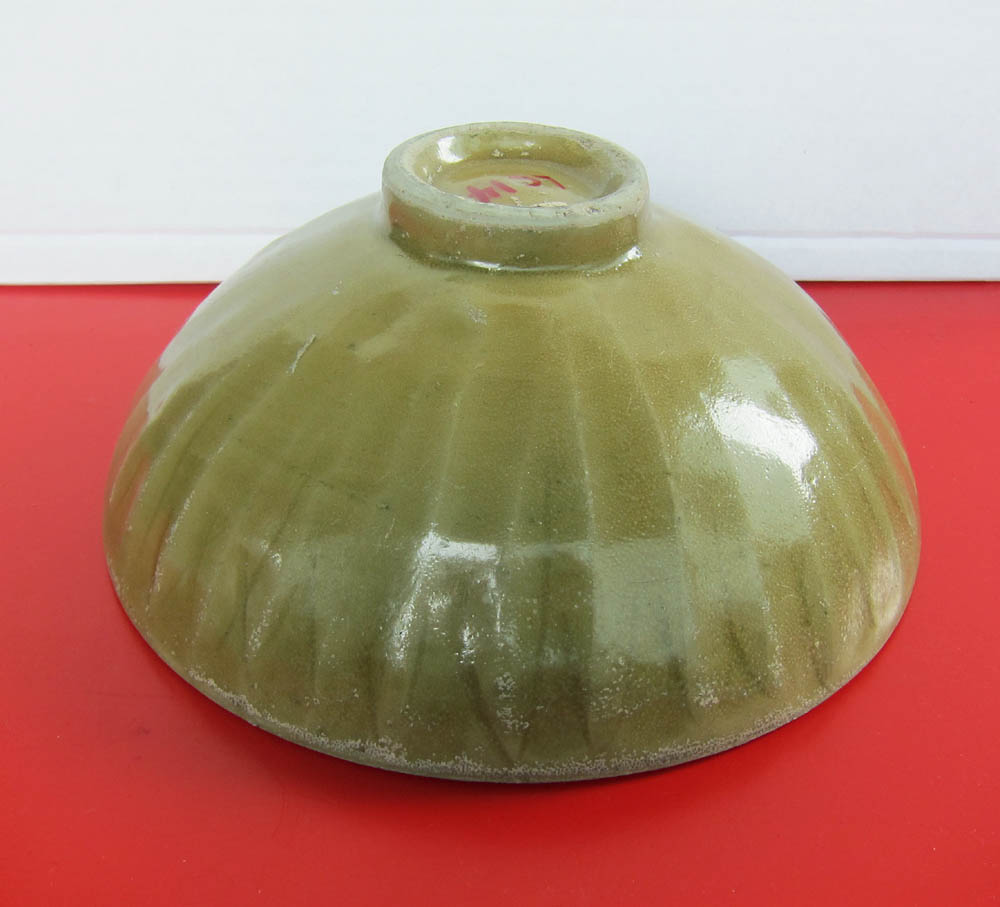 |
| The
footring wall becomes thicker. Finishing of the lotus petals
became less refine especially for the later Yuan pieces |
|
 |
|
There was overseas
demands for big bowls and plates. This example has a diameter of
26 cm. There are also those with even larger diameter.
|
 |
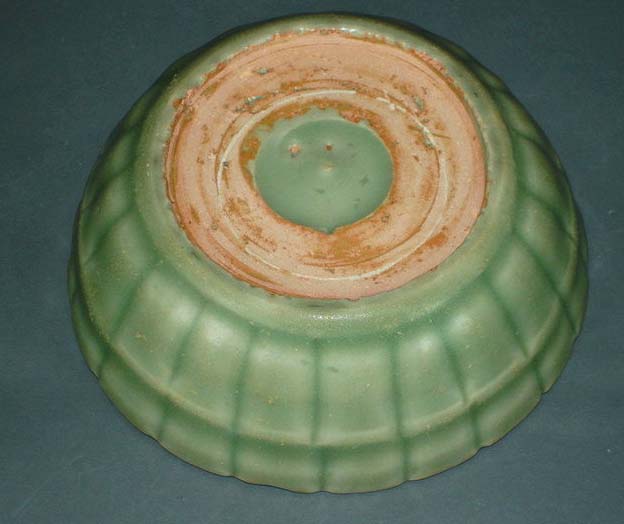 |
| A form of
small dish shaped like a basin made of bamboo strips was introduced
during the Yuan period |
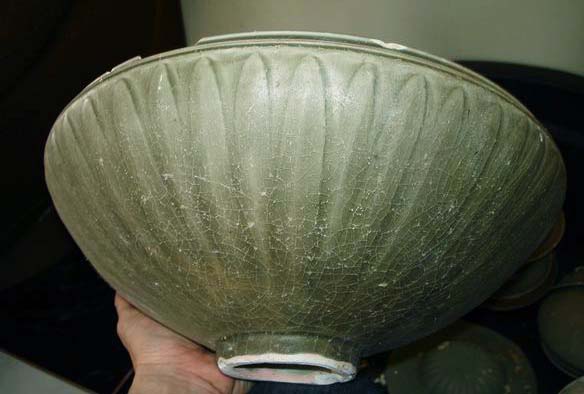 |
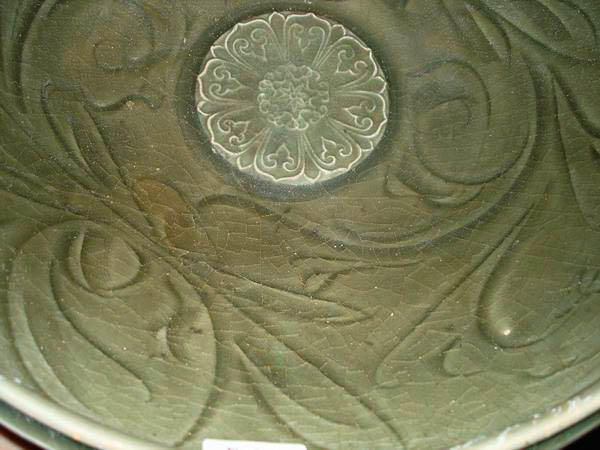 |
|
Another
example with applique and carved motif |
Some examples
of stem cups
Various sizes jarlets
were produced in large quantity to meet the demand of mainly Sutheast Asian
consumers. They include those with lugs on the shoulder and
those without. The body of the jarlet is either plain or decorated with
moulded motif, the most popular being dragon and flower.
Applique motif in biscuit form was used quite extensively during the Yuan period. There
were
also figurines with body parts such as the face and hands in biscuit form. After firing, the
unglaze biscuit motif usually oxidised into a orange colour tone. Another
decorative element was the application of iron brown spots on the vessels.
In some examples below, we can see that both biscuit moulded motif and iron spots were applied
on the vessel.
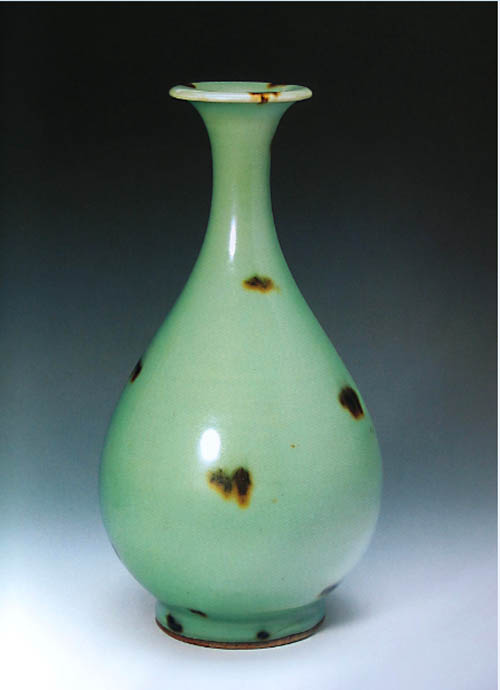
Yuan Yuhuchun
vase decorated with brown spots/splashes
|
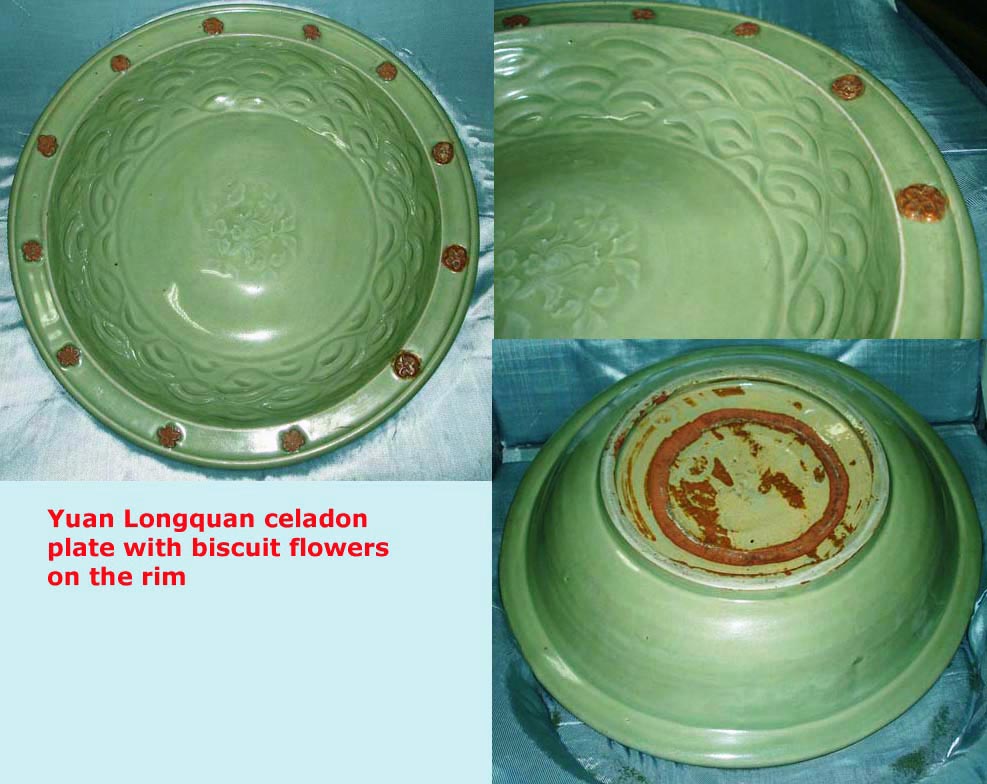
|
|
The
unglaze ring on the outer base and the impressed flower indcates that
this is most likely a later Yuan piece.
|
|
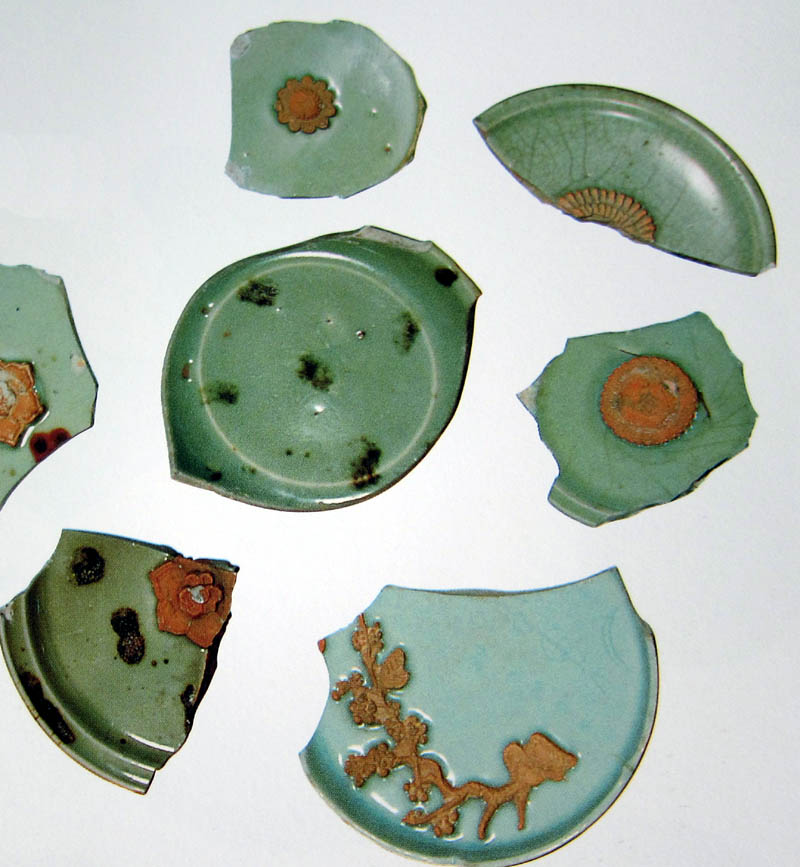 |
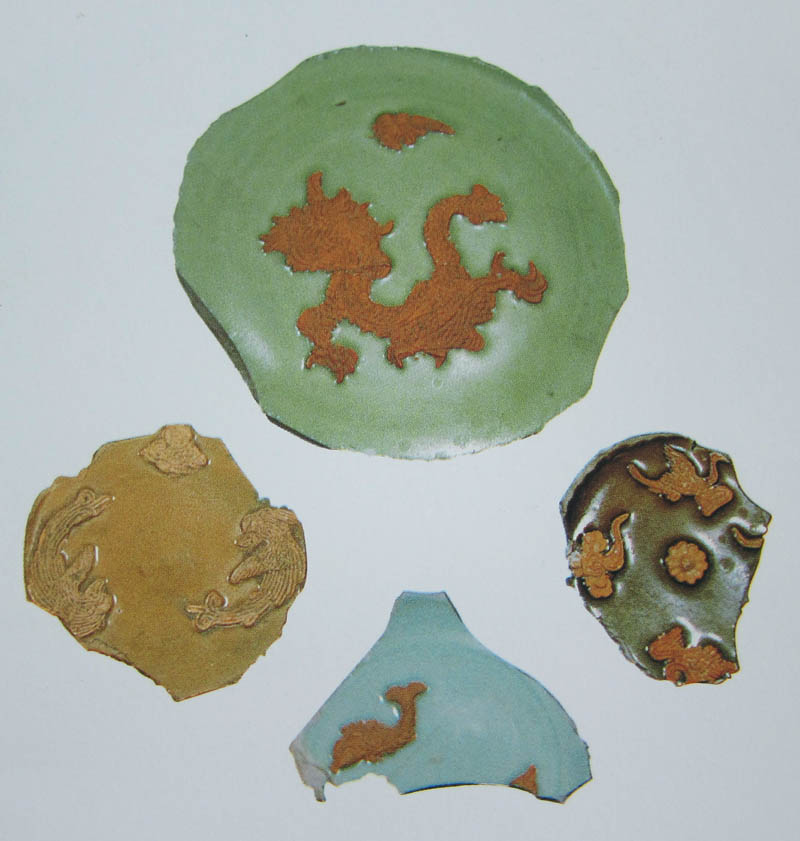 |
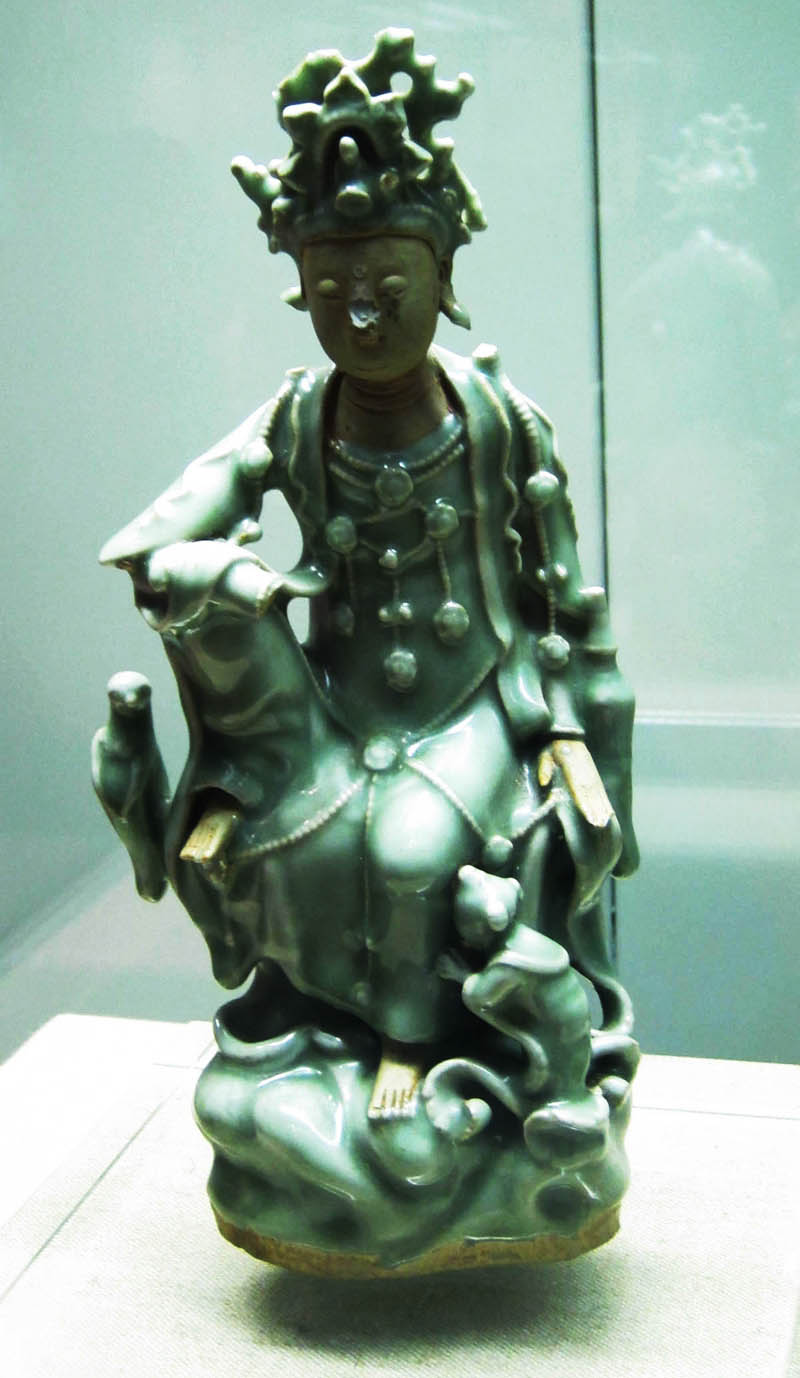 |
By the second quarter of 14th century,
majority of the vessels was applied only with a single layer of glaze. From the
economic perspective, this was probably inevitable. The
overseas demands was huge and it was economically impractical to use the
time-consuming technique of multiple glazing. The glaze is thus thinner and its colour
mainly
more pea green/greyish green. As thin glaze does not obscure
carved or impressed motif, it became popular again. Many bowls with
impressed/embossed floral decoration were recovered from the late Yuan Binh Chau
wreck in Central Vietnam in 2013 A.D.
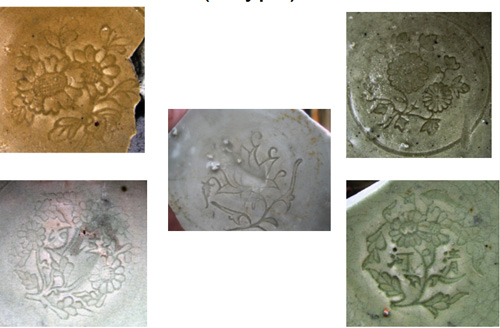
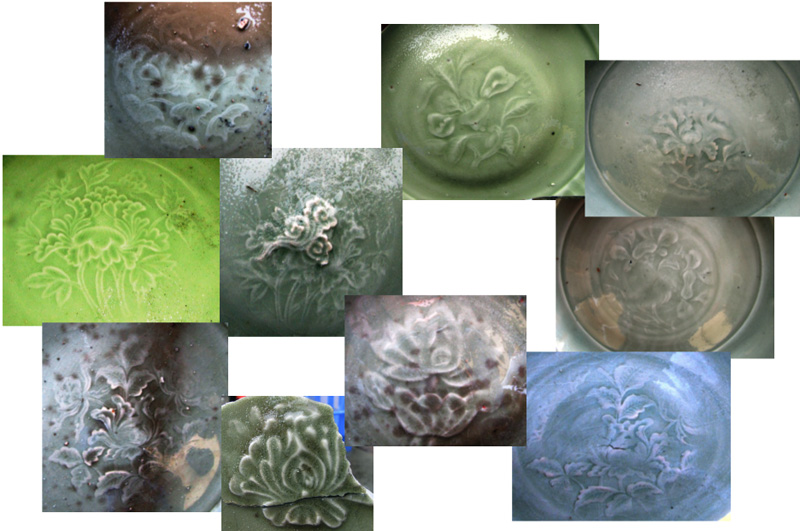
Impressed/embossed floral decoration from Binh Chau wreck
Two interesting bowl fragments with impressed floral decoration and the
character Zhiyuan si nian (至元四年) ie 4th year of Zhiyuan (1338 A.D) were
recovered from a mid Yuan/early Ming ancient distribution centre in Jiangsu
Taicang Fan Cun Jing (太仓樊村泾) in 2016.
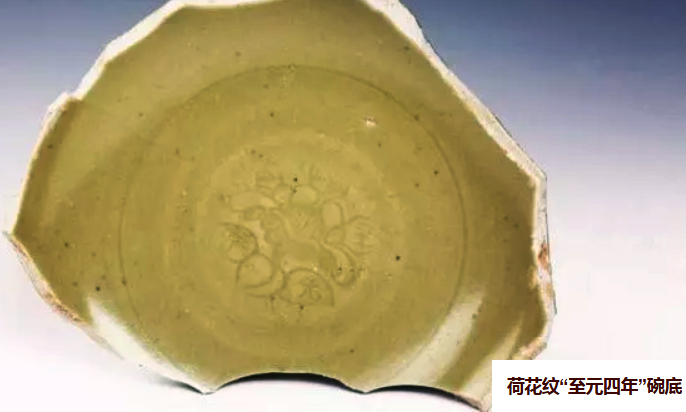
Fragment with 4 character Zhi Yuan Si nian mark (1338 A.D)
For some
low end
bowls/plates, an unglaze ring was scraped on the interior base to
facilitate stacking during firing. This mass production method was widely
adopted by kilns in both Northern and Southern China. Please see below
example.
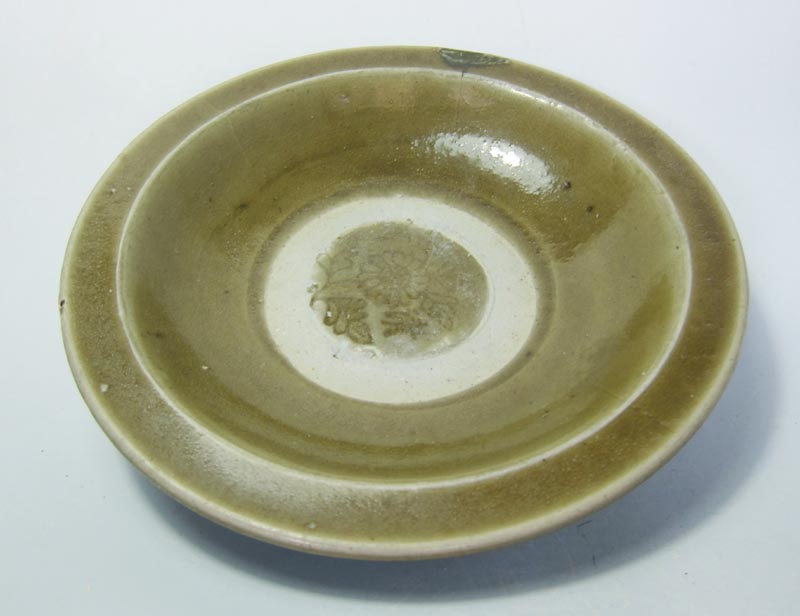 |
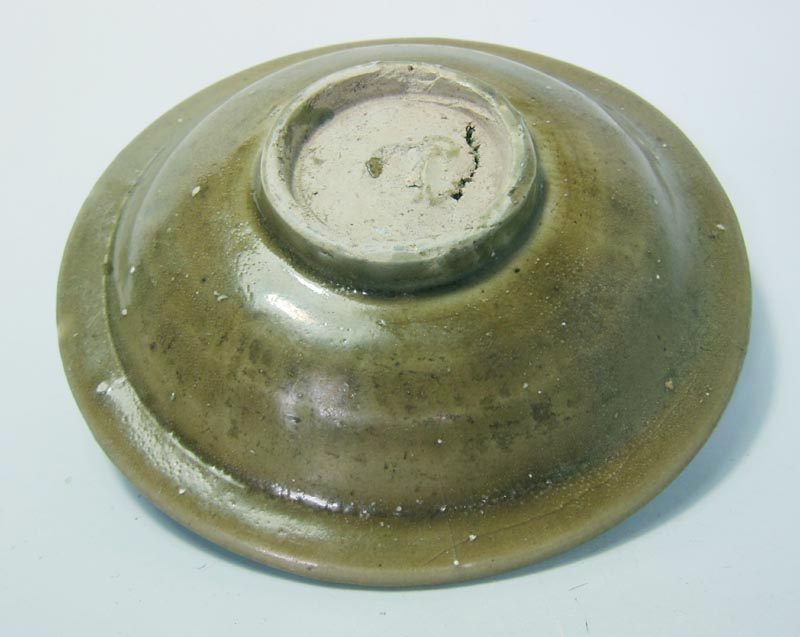 |
| Dish with an unglaze ring on
inner base |
During the late Yuan period, there was
modification to the stacking method. In
the earlier phase, the lip of the foot of a bowl/plate was trimmed to remove
the glaze. Hence, it could sit
on a disc support during firing. During the late Yuan period, the
foot was fully glazed. Instead, the outer base has an area
of unglaze ring. This area supports a ring shaped disc during
firing. Unglaze ring
on outer base of plates/bowls continued to be adopted during the Ming period.
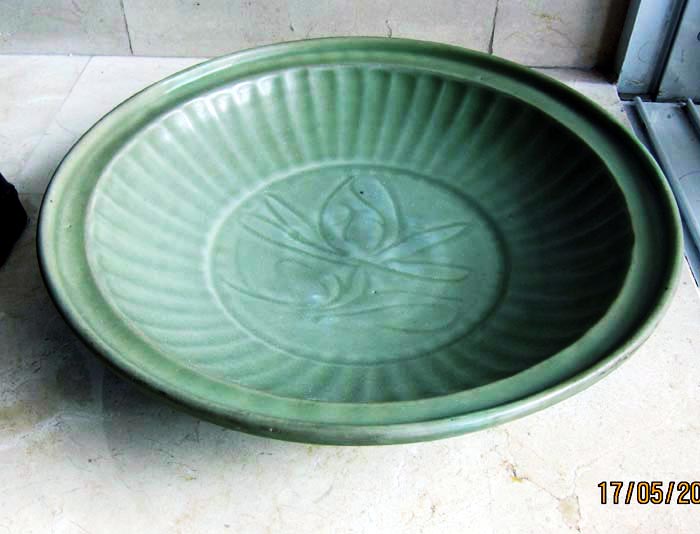 |
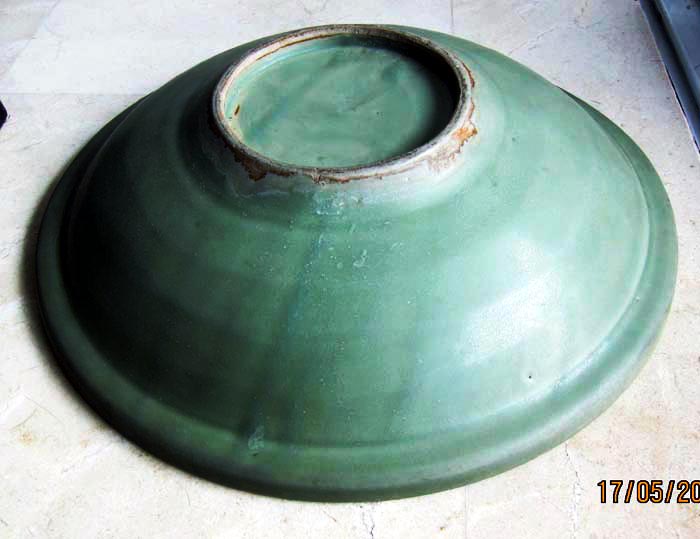 |
|
A big
plate with lip of the foot trimmed to remove the glaze. This form
with more tapered profile were found in the Sinan wreck dated A.D 1323. |
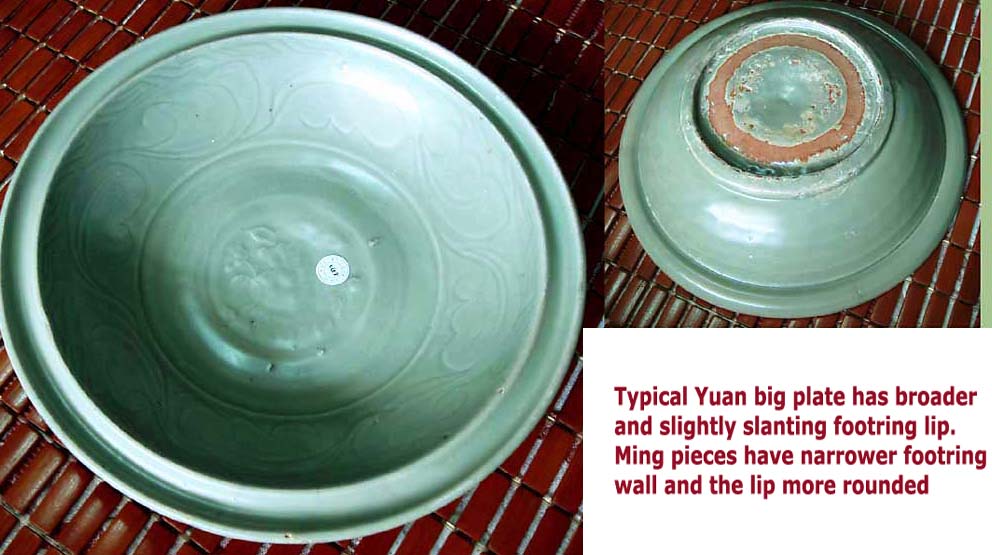
Examples
of large plates with impressed floral motif were recently found in a Yuan
shipwreck near Quang Ngai in Central Vietnam. The cargo consisted of
mainly Longquan wares but there were also Fujian ceramics and some quantity of
Yuan blue and white and brown spotted jarlets.
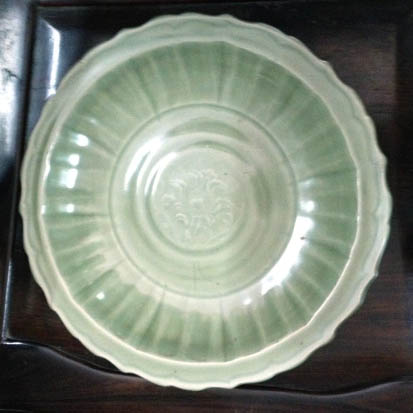 |
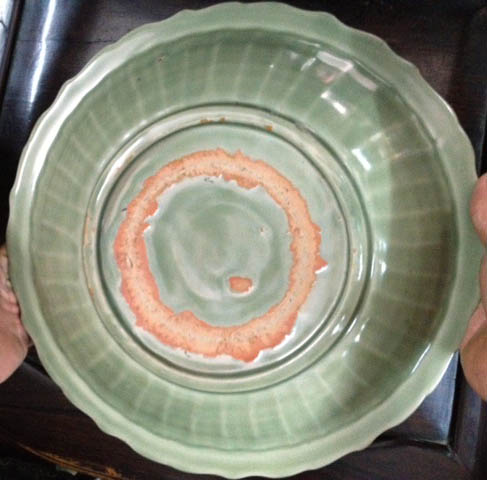 |
An
example from the recently salvaged (Sep 2012) Yuan celadon plate
from
the Yuan wreck near Quang Ngai in Central Vietnam |
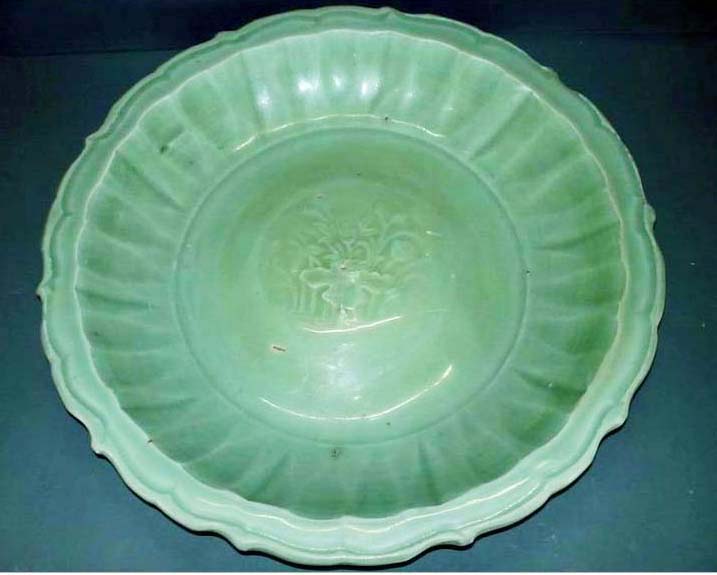 |
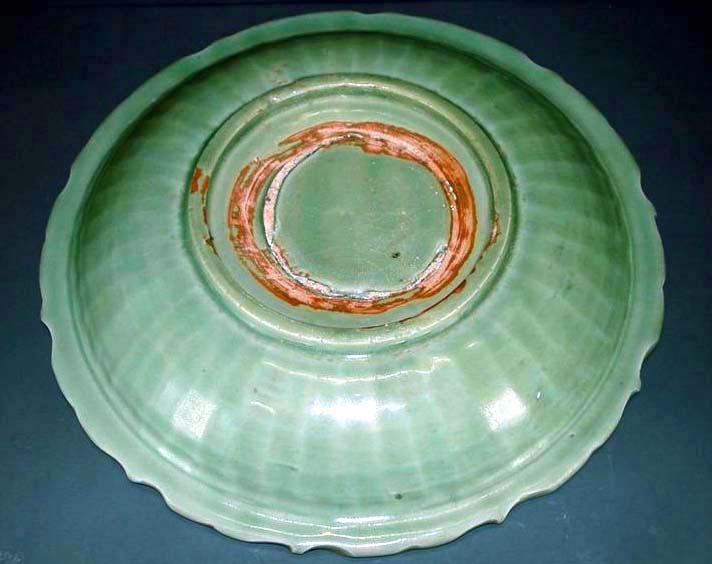 |
Besides
those with plain round rim, there were those with the scallop rim. The
plate is shallower and the wall curves more gently towards the
foot. The glazed lip of the foot is also rounded. I have seen one similar
scallop rim plate with a xinyou (辛酉)
cyclical date (most like A.D. 1381 ie
Ming Hongwu period) incised on the unglaze ring.
|
During the transition from
Yuan to Ming, there was also a category of plates with recess base.
A clear Dynastic period attribution is very
difficult. They usually have impressed vertical strips on the inner wall
and an impressed motif on the inner base, most commonly flower. Such plates are usually
thickly potted, heavy and high fired. Similar plates as the
one below were found in the Turiang wreck dated to the last quarter of
14th Century (Ming Hongwu period). Another
example with the impressed flower is shown below. Most are usually
attributed to the Early Ming period and majority are likely to be produced
during the early Ming phase. However, they are already in production by
the late Yuan period.
Continue to:
Page
4, Return to:
Page 1,
Page
2,
Home





